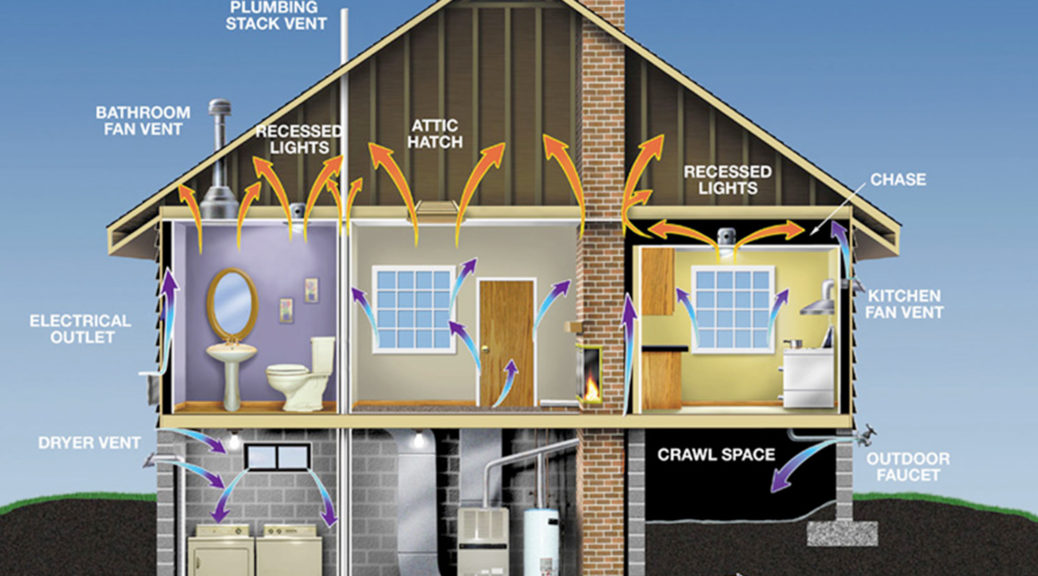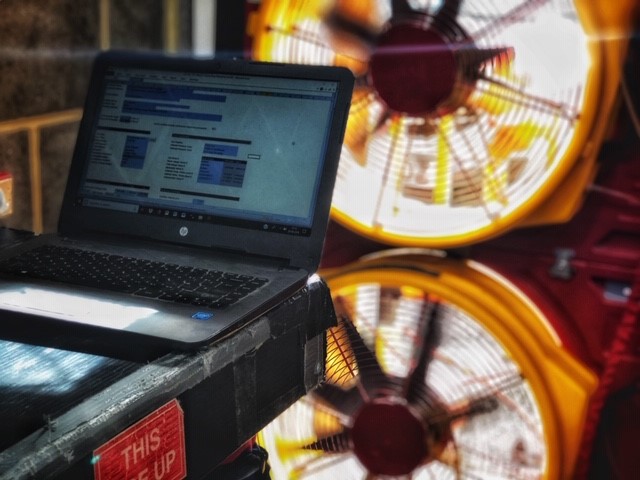
Passing Your Air Tightness Test
Top Tips for Passing Your Air Tightness Test
APT Sound Testing has carried out thousands of air tightness tests on residential and commercial buildings. Over the last 12 years, we leaned quite a few things on how to seal buildings to pass air tightness testing to achieve building control sign-off. To try and help clients prepare their buildings, we have collated our top 10 tips to pass your air testing. :
1. Design and apply an air tightness strategy from the start of the project.
Once the design air permeability rate has been established, sit down with the design team and subcontractor trades to ensure they know the importance of designing and constructing the building to be air tight.
The air tightness line needs to be established as early as possible. This can be as easy as drawing a red line through all the elements that separate heated and unheated elements – such as plant rooms or external store rooms. Also, it is also important to have an air tightness coordinator on site to check consultant details and the associated on site construction.

2. Onsite construction signoff sheets throughout the build
An onsite inspection regime should be put in place throughout the construction phase to ensure that the air barrier is not compromised by poor workmanship. If the building fails the air tightness test, it can lead to very expensive remedial works.
Air leakage commonly occurs due to the inner lining of the building envelope being breached during construction. One way to prevent excess air leakage paths is to use joist hangers, rather than ‘built in’ floor joists.
3. Careful sealing during the Drylining phase
In our experience dot and dab plasterboard is often a major cause of air leakage, as any missed leakage due to unfilled mortar joints in the brick or blockwork, has a potential path from behind the board to the floor slab and up behind and through the walls.
To lower the chance of air leakage on these areas or use solid lines of adhesive around all sides of the board and any cut outs for sockets and/or parge coat the masonry walls first. It is also recommended you seal at the skirting boards/floor/wall junction wherever possible.
4. Seal around service penetrations – waste and supply pipework
Ensure all service penetrations such as waste and supply pipework is sealed where it penetrates through walls and floors. Use mastic/gunned sealants on smaller gaps; on larger gaps use pre-compressed flexible expanding foam strips or plasterboard fillets. Do not use expanding foam as it can shrinks and break away from the surrounding construction. There are flexible foams, which are tested for air tight applications which should be fit for purpose.
5. Seal around Windows and Doors
We still see large amounts of ceilings and doors which have not been adequately sealed or are not fitting properly and need to be adjusted or eased. Use suitable draught strips, seals and sealants and to ensure there are no gaps or cracks around all window/door jambs, sills and lintels and ensure that the installers have properly checked the doors and/or windows to ensure they are closing tightly against the surrounding frames.
6. Seal around Radiator Pipes and Manifolds
Also many radiator pipes penetrate the wall behind a rad, or through the floor – which are not always obvious. Manifolds from underfloor systems are often not sealed into the floor screed, which is then covered up with carpet which still results in a large air leakage path. Carefully check and seal the areas prior to finishes being applied.
7. Seal around Loft Hatches and Eaves Cupboards
With space at a premium many dwellings have rooms designed in the roof; unfortunately this can often be the main air leakage area in dwellings. Historically, we have seen a lot of air leakage through loft hatches, eaves cupboard doors and service cupboards. As the cupboards are usually unheated the door need to be sealed as well as external doors and windows.
8. Ensure light fittings are sealed.
Down lighters can be a major cause of air leakage. Seal holes around light fittings and pull cords in the ceiling, choose airtight fittings if possible, otherwise install air tight boxes over the fitting in the ceiling void”.
9. Seal around mechanical and electrical services
It is essential that water, drainage, gas pipes, boiler flues and electricity cables are fully sealed prior to the air tightness test. Historically we often find leakage in kitchens, bathrooms, and boiler cupboards due to leaky services.
10. Kitchens and Bathrooms the main air leakage culprits
The main areas of air leakage in most new dwellings are usually within kitchens and bathrooms. Kitchens should be finished, with all mechanical and electrical service penetrations completely sealed as well as sealing to the wall/floor junction – there is not usually skirting board installed behind kitchen units as they can’t be seen once the kitchen units are in place. All appliances should be installed and all service boxing such as SVP drops fully sealed at the wall/floor junction. All extractors are fully fitted.
Bathrooms should be carefully checked and sealed around all SVP and waste pipe work. All bathroom fittings should installed and fully complete. Bathrooms often suffer with excess air leakage due leaky bath panels and waste pipe work, also the wall/floor junction is usually unsealed. You should ensure air leakage paths are fully sealed before fitting bath panels, shower bases. All boxing to vanity unit and extractors should also be sealed. For more tips on air leakage paths, see our air tightness checklist
11. Apply all temporary seals before we get to site:
If you seal all the temporary seals before we get to site it can help to expedite the test, to allow for comprehensive smoke testing in the event of a test failure.
Official guidance has set firm guidelines around what can and can’t be temporarily sealed when it comes to air tightness testing. The main contractor has the responsibility to put temporary seals in place in line with the guidelines published by ATTMA. Temporary seals can be achieved simply by using low tack masking tape as not to damage the surrounding finishes.
The allowed temporary seals are:
- Chimney flues
- Mechanical ventilation systems such as kitchen and bathroom extractor fans
- Trickle vents
- Air conditioning grilles
- Passive ventilation such as air bricks, passive stacks and sub floor ventilation systems
12. Don’t undertake the Air Tightness Test too early
In our experience a large amount of air tightness tests failures are due to us being called in too early.
This can be a very costly mistake, which may result in re-tests, as well as the wasted man hours for the clients sealing teams as well as penalties imposed for delayed handovers. Our air tightness checklist helps our clients to check that their project is fully prepared to undertake the air tightness test.
Contact us now
If you would like more information on how to prepare your building to pass an air tightness test please visit our website at www.aptsoundtesting.co.uk or contact us at: info@aptsoundtesting.co.uk